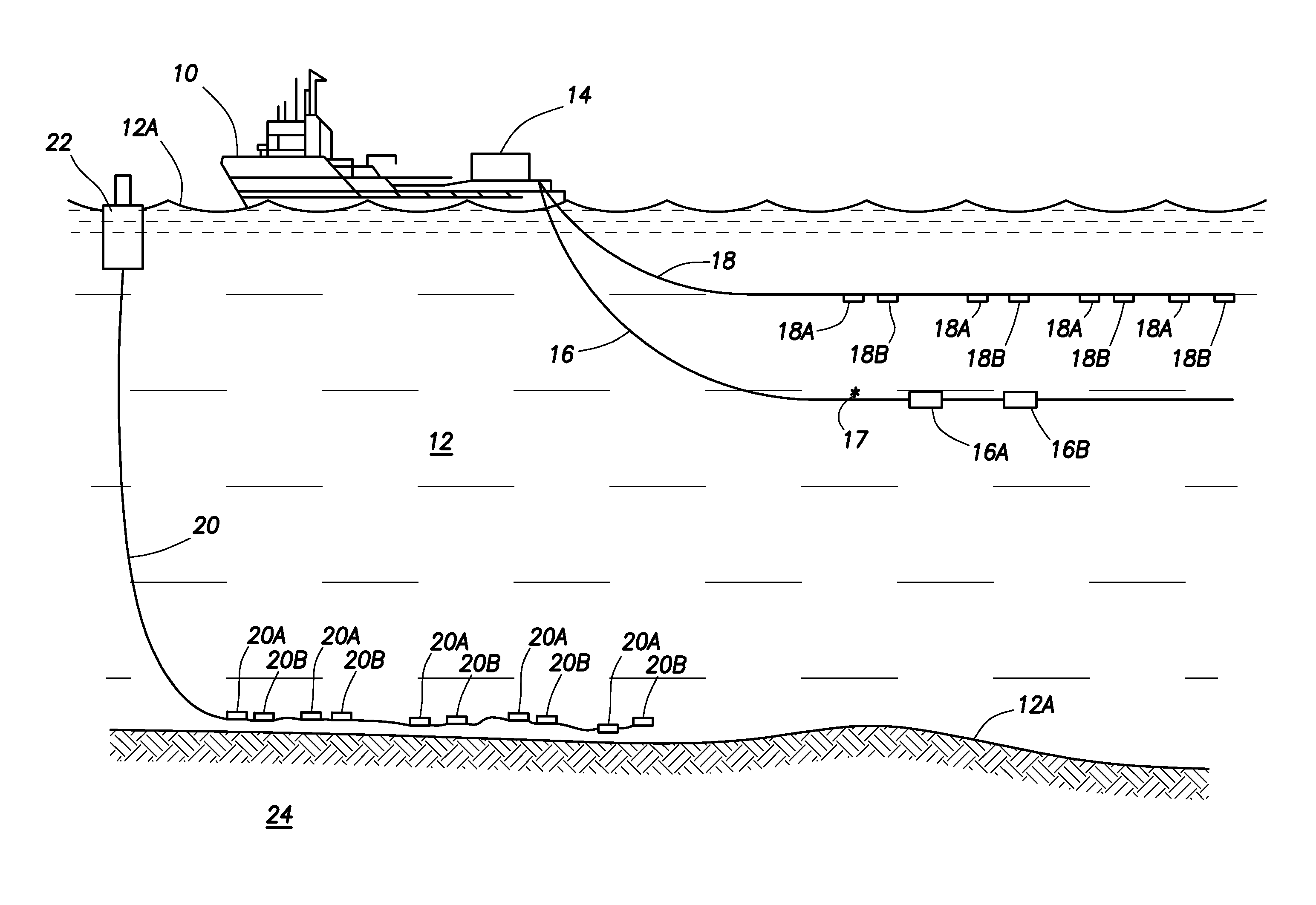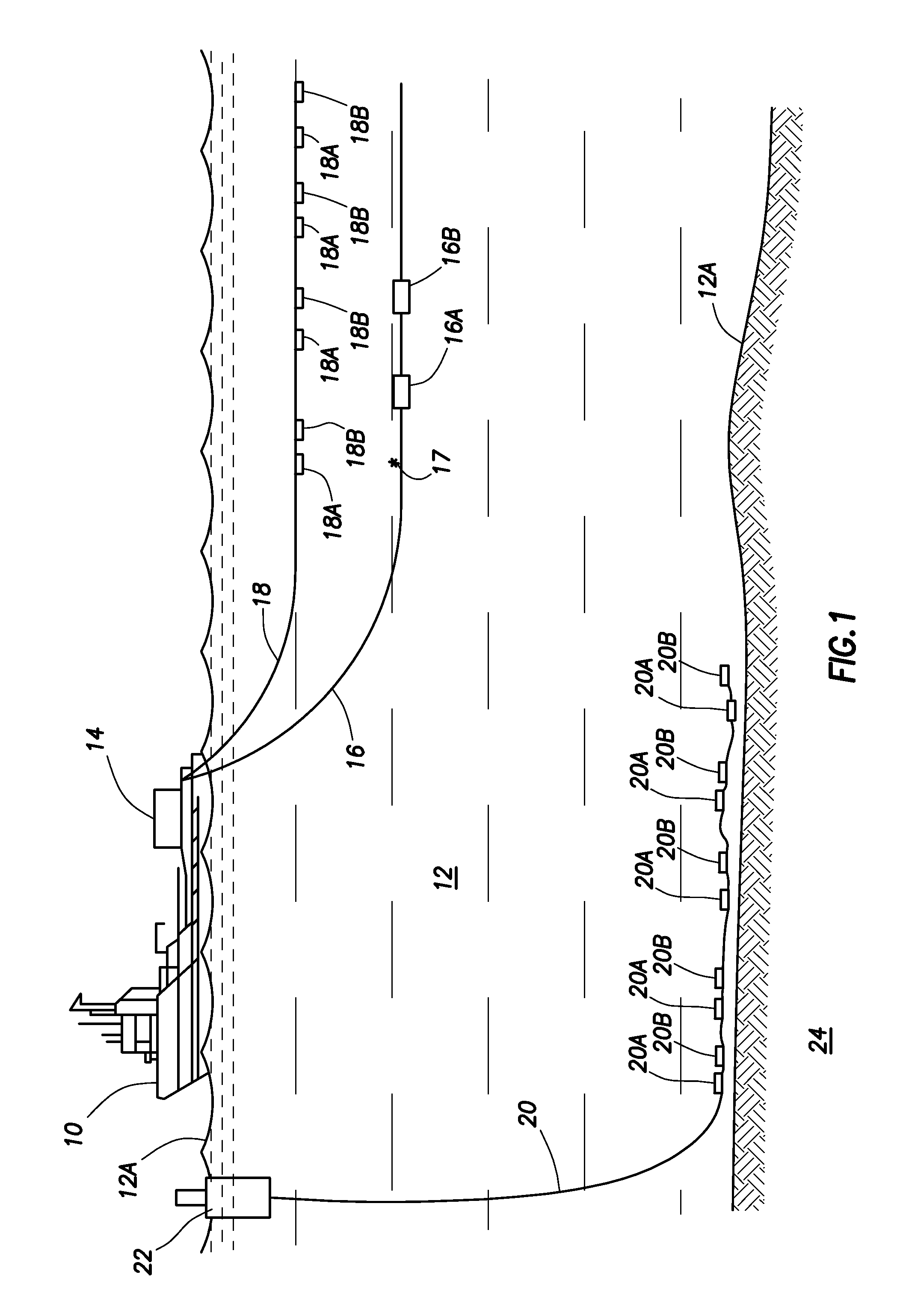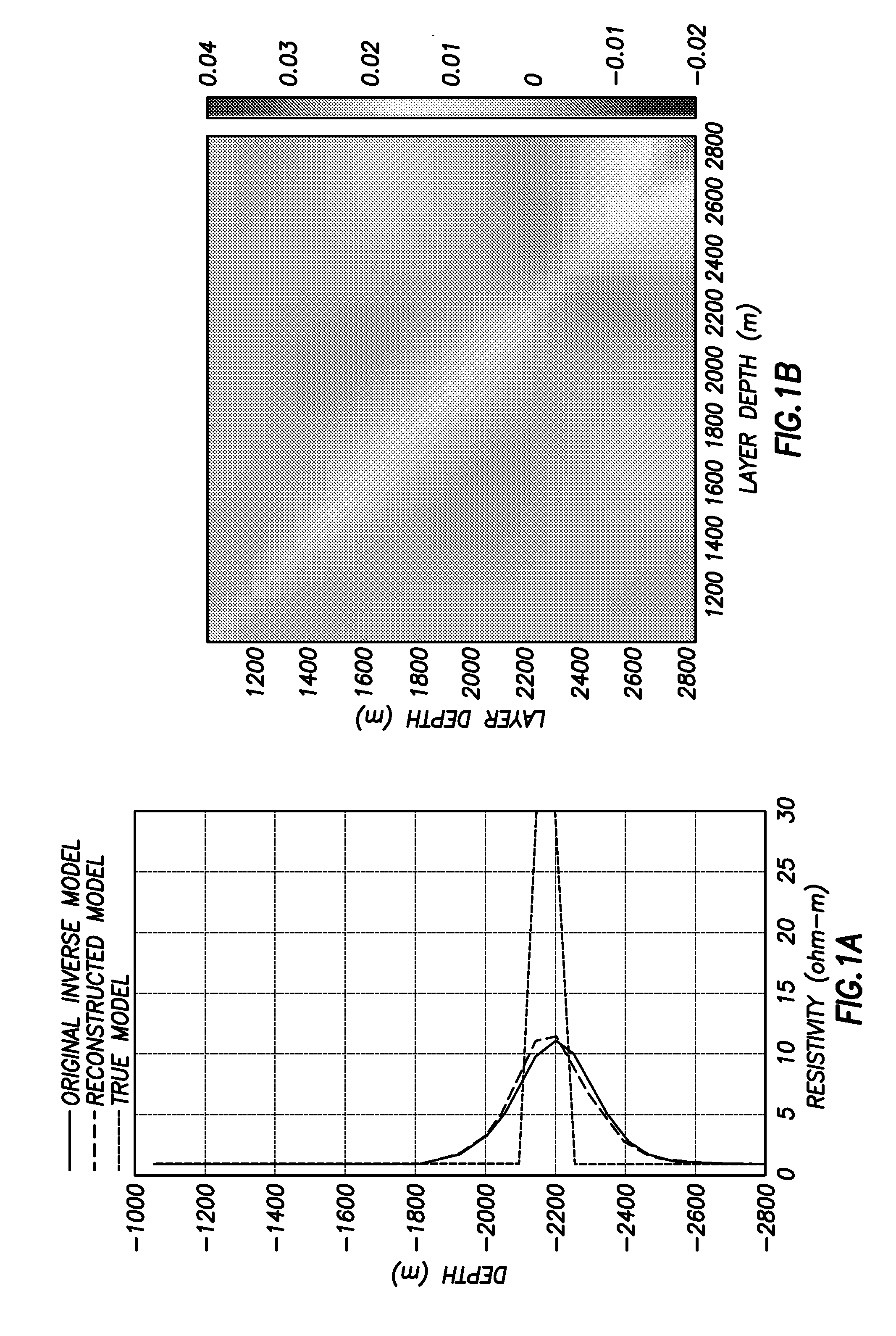Uncertainty estimation for large-scale nonlinear inverse problems using geometric sampling and covariance-free model compression
a nonlinear inverse and uncertainty estimation technology, applied in the field of uncertainty estimation for large-scale nonlinear inversion problems using geometric sampling and covariance-free model compression, can solve the problems of nonlinear inverse uncertainty remaining one of the most significant unsolved problems, and the method has been shown to be deficient for large-scale nonlinear inversion problems
- Summary
- Abstract
- Description
- Claims
- Application Information
AI Technical Summary
Benefits of technology
Problems solved by technology
Method used
Image
Examples
Embodiment Construction
[0056]FIG. 1 shows an example marine electromagnetic survey system that may acquire controlled source electromagnetic survey (CSEM) signals for processing according to the invention. The system may include a survey vessel 10 that moves along the surface 12A of a body of water 12 such as a lake or the ocean. The vessel 10 may include thereon equipment, referred to for convenience as a “recording system” and shown generally at 14, for generating electromagnetic fields to be imparted into formations 24 below the bottom of the water 12 and for recording measurements made in response to the imparted electromagnetic fields. The recording system 14 may include (none shown separately for clarity of the illustration) navigation devices to determine the geodetic position of the vessel 10. The vessel may include further equipment for determining geodetic position and / or heading of one or more electromagnetic transmitters and receivers (described below), devices for imparting electric current t...
PUM
 Login to View More
Login to View More Abstract
Description
Claims
Application Information
 Login to View More
Login to View More - R&D
- Intellectual Property
- Life Sciences
- Materials
- Tech Scout
- Unparalleled Data Quality
- Higher Quality Content
- 60% Fewer Hallucinations
Browse by: Latest US Patents, China's latest patents, Technical Efficacy Thesaurus, Application Domain, Technology Topic, Popular Technical Reports.
© 2025 PatSnap. All rights reserved.Legal|Privacy policy|Modern Slavery Act Transparency Statement|Sitemap|About US| Contact US: help@patsnap.com



